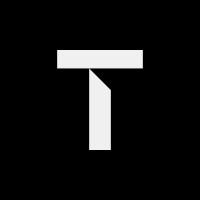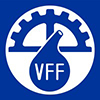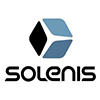-
Squeeze more value out of your FCC gasoline
As sulfur legislations tighten, it becomes more difficult for refiners to meet the specifications from their FCC gasoline post-treatment units. Particularly the octane number poses challenges, since some olefins are simultaneously being hydrogenated. The consequent loss of octane often prevents the refineries from achieving maximum value. Topsoe’s series of HyOctane™ catalysts are specifically developed for all steps in FCC gasoline post-treatment applications. ...
-
Unparalleled technology with uncompromising standards. In 2001, Orion Instruments set a course to raise the standards by which magnetic level indicators (MLIs) are viewed. As an AMETEK company whose level and flow solutions have been trusted worldwide for more than 80 years — Orion’s products are engineered and manufactured under the same strict and unyielding standards. A Magnetic Level Indicator (MLI) consists of 3 major components - Chamber - Float - Indicator How ...
-
Rugged and durable oxygen, carbon monoxide and carbon dioxide portable analyzer designed for field and light industrial use. The MiniHD 5200 is an ultra-sensitive analyzer designed for O2, CO and CO2 monitoring in common gas mixtures. With a rugged and durable design, the MiniHD is optimized for use in both the field and also light industrial applications. In addition to its leading-edge analytical capability, the MiniHD delivers a feature-rich suite of added benefits including ...
-
Magnetrol mechanical buoyancy switches
Magnetrol mechanical buoyancy switches work harder, last longer and perform better in the most extreme liquid level applications. For accurate interface Measurement Make sure you rely on a Magnetrol buoyancy switch for your liquid interface application. From simple to complex separation processes, our float and displacer switches remain virtually unaffected by top-layer thickness and emulsion, to provide outstanding reliability and accuracy in level detection. For tank overfill Protection ...
-
Triple-offset metal seated butterfly valve
KX Safeflex provides a valve which is reliable, cost-effective and due to specification for critical applications and in various aspects is far superior to conventional solutions. OHL Gutermuth supplies this series of butterfly valves in many variations in terms of function, construction and material, fully adapted to the individual operational requirements. Throughout the sectors of power stations, paper and chemical industry, petrochemicals, gas industry, water and wastewater, ...
-
H2S oxidation system for water treatment facilities
A new water treatment facility in the town of Jupiter, Florida, was causing a serious odor problem. H2S removed from the purified water was being released into the atmosphere. Complaints about the odor came from the residences and businesses downwind of the treatment plant. A turnkey LO-CAT® Hydrogen Sulfide Oxidation System designed to process 30,000 CFM of air containing 250 ppm of H2S solved this problem. Due to the scarcity of fresh water available for treatment ...
-
Magcat Catalysts produce up to 15% more syngas through the steam reforming process. Magma form their own catalyst carrier utilizing polymer ceramic technology rather than the traditional pressure method, providing higher intrinsic strength, greater geometric surface area and surface texture. The “Golf Ball” shape and texturing creates a % improvement in active surface area. That combined with enlarged near surface porosity and ENHANCER™ Nickel crystal promoter, delivers ...
-
Increase capacity in your column with a tray design revamp
When trying to increase column capacity beyond design rates, an operator may notice loss in separation efficiency or high pressure drop, indicative of either vapor phase or liquid phase hydraulic limitations. An optimized tray design can eliminate hydraulic constraints to provide better column capacity and performance. Common Vapor Constraints to Raising Throughput In systems limited by higher vapor rates (typically lower pressure systems), jet flooding may constrain the column. ...
-
Innovative Fluid Catalytic Cracking (FCC) Catalyst for butylenes maximization Fourte® maximizes butylenes production in the FCCU and increases gasoline octane while preserving catalyst activity. Technology Fourte is BASF’s butylene maximization FCC catalyst developed on the novel Multiple Framework Topologies (MFT) technology. The technology behind Fourte delivers high selectivity toward C4 olefins by optimizing performance across five key factors: rare earth, activity, ...
-
Topsoe´s ReFRESH™ technology offers you the opportunity to use Haldor Topsoe catalysts twice for maximum economic benefit by reactivation of the catalytically active sites. Activity up to 95+ % of fresh catalyst is restored. The technology is commercially proven with more than 65 references and applicable for spent BRIM® and HyBRIM™ catalysts. The ReFRESH™ technology is a specialized method of metal redistribution – available only from Topsoe ...
-
For many decades, VFF droplet separators have been successfully used in a large variety of applications and design forms — up to 18 m in diameter. Wire mesh droplet separators (Demister) are used for the removal of small liquid droplets (aerosols) from exhaust gases, exhaust air and steam. VFF’s portfolio includes a wide range of practical experience in the following applications and devices: - Absorbers - Seawater desalination equipment - Washers - Sulphuric acid plants - ...
-
Altrium® is the newest BASF catalyst based on the combined technologies AIM (Advanced Innovative Matrix) and IZY (Improved Zeolite-Y). Due to changes in market environment, increasing the LCO output through better bottoms upgrading became more attractive for refineries. The newest BASF resid catalyst, Altrium, was introduced to a Western European refinery to increase transportation fuels yields. Operation Background and Performance The fluid catalytic cracking unit (FCCU) ...
-
UNICAT Catalyst’s grading series are uniquely shaped, high alumina inert filtration grading disks. These disks have been designed and optimized to mitigate pressure drop problems due to the build-up of various foulants in the grading and top catalyst layers of hydrotreating reactors and other fixed bed units. AFS grading solutions have been successfully installed in more than 500 applications. Innovation in design The Next Generation of AFS has optimized uniform flow channels, ...
-
Transforming hydrogen storage and transport
Join us for an insightful webinar where we delve into the hydrogen economy and discuss bankable and sustainable hydrogen transport projects that exist today. This session will focus on the commercialized and groundbreaking Liquid Organic Hydrogen Carriers (LOHC) technology that is revolutionizing the hydrogen economy. We will present an exciting case study demonstrating LOHC's differentiated benefits when transporting blue hydrogen produced in low cost regions and delivering that ...
-
Beyond processbook & PI vision: Exploring today’s industrial analytics tools
In the Manufacturing 4.0 era, industrial organizations have more data at their fingertips than ever, offering the promise of higher production rates, more consistent quality, and reduced costs through data-driven strategies. Standing between many businesses and this promise of process optimization are questions surrounding the right tools to harness this data effectively – a choice complicated by the shifting status of longtime standard OSIsoft’s ProcessBook and PI Vision ...
-
The progress of SAF solutions for the decarbonisation of aviation
As the world increasingly commits to steeper decarbonization targets, the aviation industry is determined to develop sustainable solutions to produce cost-competitive, high-yield jet fuel with minimal environmental impact. The International Air Transport Association (IATA) estimates that the 2024 production volume of sustainable aviation fuels (SAF) will triple from 2023 levels – soaring to 1.5 million tonnes. This is in line with larger SAF production trends, as 2023 levels ...
-
Optimising the efficiency of shutdowns and turnarounds to improve processes
Tracerco’s diagnostic techniques provide you with the invaluable insights you need to reduce your turnaround times and costs by identifying operational process problems and mechanical integrity of internals in real-time and whilst online. Tracerco’s level, density, interface and multiphase nucleonic instrumentation provides invaluable insights to help you make informed decisions to increase profits, manage risks and reduce costs. Making data-driven decisions can significantly ...
-
Decarbonizing process heat with industrial heat pumps and steam compressors
Industrial energy consumption accounts for about 25% of energy demand and CO2 emissions worldwide, with process heat being the most common application. Hydrocarbon and basic chemical processing plants are particularly process heat-intensive. Heat demand for basic operations distillation and heating of fluids in US industry is about as energy intense as all other industrial heat applications combined. At the same time, there is a vast, unused potential for waste heat in many plant ...
-
Proven decarbonisation pathway for sustainable biofuels and chemicals production from waste
The flexibility to make use of varying waste streams as feedstocks to replace primary fossil resources is a common goal in operations today. You may be looking at sources such as woody and agricultural biomass, MSW, RDF, SRF, sewage sludge, or non-recyclable plastic to produce bio or circular chemicals or sustainable fuels: Bio Syngas, green hydrogen, SAF, sustainable maritime fuels, or BioMethanol. The key question is how to decarbonize these assets to meet sustainability and ...
-
Introduction to Sinopec Steam Cracking Technology
Sinopec has been committed to the development and application of steam cracking technology for almost 40 years, and has mastered advanced and complete ethylene technology which can process a variety of feedstocks, including CBL cracking furnace technology, 3 major ethylene recovery technologies (LECT, ART and AERP) and WAO. This webinar will introduce the technology and its applications, with an emphasis on how it can be applied in a variety of plants. By attending, you will ...
-
Introduction to the Sinopec Closed Coke Handling System
The Sinopec Closed Coke Handling System (S-CCHS) is a safe and eco-friendly closed petroleum coke removal, conveying, and storage system with remote intelligent operation for pollution-free coke removal. This webinar will introduce the technology and its applications, with an emphasis on how it can be applied in your delayed coking unit operations. By attending, you will gain insights into: - Components and operation of the S-CCHS technology - How S-CCHS can eliminate ...
-
Innovative solutions to shape the hydrogen economy
View this webinar for an insightful journey into the future of sustainable energy with Honeywell H₂ Solutions. In this exclusive webinar, we'll delve into cutting-edge innovations in hydrogen technology, focusing on Blue Hydrogen solutions and Liquid Organic Hydrogen Carriers (LOHC). Attending will offer these valuable benefits: - Discover how Honeywell is leading the way in transforming the energy industry through Blue Hydrogen, a game-changing process that reduces carbon ...
-
Covering your streams with gas chromatography: Analytical technique and key applications
Gas Chromatography is a critical part of any analytical lab in the refining process. It is such a standard that operators take for granted all the ways it is used. Join us as we will be touching on the importance of GC in the lab, what goes into selecting a unit, and three key applications seen in many labs: Refinery Gas Analysis, Group type Analysis with Reformulyzer pre-frac, and Simulated Distillation. In this webinar we will: - Give an overview of the importance of GC ...
-
Overcoming roadblocks to decarbonisation
Reducing global CO2 emissions and limiting the increase in global average temperature to 1.5°C is probably the greatest challenge humanity has ever faced. The continuous increase in strength and frequency of natural disasters accompanied with record-high temperatures have drastically accelerated the need to take action to reduce our carbon impact. There is a global consensus between governments, companies, and the public that there is a need to decarbonise our societies and, ...
-
Biofilm: A hidden threat to refining and petrochemical operations
Did you know that a seemingly insignificant amount of biofilm can negatively affect heat exchanger reliability and efficiency and, as a result, significantly limit production? Attend this webinar from Solenis to gain valuable insights into risks and solution methodologies for biofilm issues. • Learn how biofilm can affect your profitability and production efficiency • Explore novel technologies from Solenis that mitigate the risks posed by biofilm • Hear about a leading ...
-
Mission critical electric heat tracing solutions to support the energy transition
Around the globe, clean fuels are helping reduce carbon emissions. And world leaders have pledged to invest in technologies such as carbon capture and hydrogen to help accelerate the clean energy transition. Biofuels, hydrogen, liquefied natural gas and carbon capture technologies are driving the transition to clean fuels and CO2 reduction. This webinar gives you the opportunity to learn how nVent RAYCHEM solutions for the energy transition markets can enable and optimize your ...



































